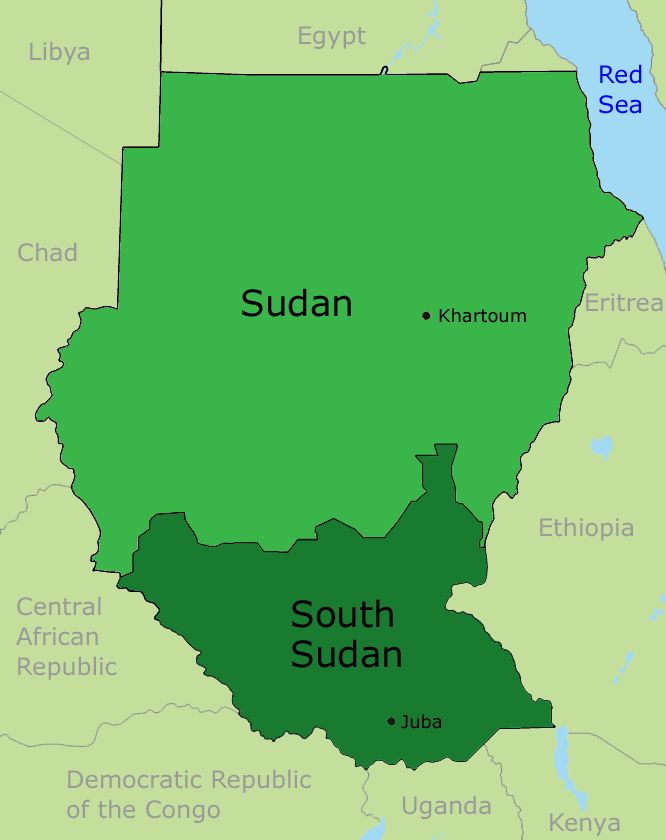South Sudan’s Independence: Historical Conflict, Referendum Process, and Nation-Building Challenges
Introduction
The independence of South Sudan in 2011 marked the birth of the world’s newest internationally recognised nation. Following decades of civil conflict, displacement, and political marginalisation under successive Khartoum governments, the people of Southern Sudan overwhelmingly voted for secession in a referendum that recorded 98.8% support. The referendum was conducted in accordance with the 2005 Comprehensive Peace Agreement (CPA) and was internationally endorsed as free and fair. This article traces the historical background of the Sudanese conflict, examines the causes leading to South Sudan’s independence, assesses the political and economic effects of state formation, and analyses the global response to this landmark development.

Historical Background
Sudan’s modern history has been shaped by deep divisions between the Arab-Muslim north and the African-Christian/Animist south. These divisions were reinforced by colonial administrative policies during Anglo-Egyptian rule (1899–1956), which governed the north and south separately and left the south underdeveloped.
- 1956 – Sudan gained independence from British-Egyptian rule, but power was consolidated in the northern elite, fuelling southern grievances.
- 1955–1972 – The First Sudanese Civil War broke out even before independence and ended with the Addis Ababa Agreement, granting limited autonomy to the south.
- 1983–2005 – The Second Sudanese Civil War erupted when President Jaafar Nimeiri revoked southern autonomy and introduced Sharia law, triggering renewed resistance.
- The southern rebel movement, the Sudan People’s Liberation Army (SPLA), led by John Garang, fought for greater rights and self-determination.
The war resulted in an estimated two million deaths and millions of displaced people. The eventual peace was brokered through the Comprehensive Peace Agreement (CPA) signed in 2005, which included provisions for a future referendum on independence for the south.
Key Causes of Secession
- Ethnic, Religious, and Cultural Divisions
South Sudan’s population is ethnically and linguistically diverse, largely practising Christianity and traditional religions, in contrast to the predominantly Arab-Muslim north. These identity-based differences fuelled long-standing grievances over marginalisation and cultural suppression. - Political Exclusion and Centralisation
Governance in Sudan historically concentrated power in Khartoum. Southern leaders and communities were systematically excluded from political decision-making, representation, and equitable resource allocation. - Economic Injustice and Oil Disputes
While much of Sudan’s oil reserves lie in the south, revenue was disproportionately controlled by the north. Southern communities received minimal benefit from natural resources extracted from their territory, exacerbating inequality and tension. - Armed Conflict and Humanitarian Crisis
Decades of war devastated southern infrastructure, health services, and education. Mass displacement, human rights abuses, and famine led to strong popular support for complete political separation as a path toward peace and reconstruction.
The 2011 Referendum and Independence
Following six years of interim governance and power-sharing arrangements under the CPA, South Sudan held a referendum in January 2011.
- The result was 98.83% in favour of secession, with a turnout of nearly 84%.
- The referendum was monitored by international observers and declared credible and transparent.
- On 9 July 2011, South Sudan officially declared independence, and was swiftly recognised by the international community.
- It became the 193rd member of the United Nations and the 54th member of the African Union.
Effects of Independence
Political Impact
- South Sudan established a transitional government led by President Salva Kiir, adopting a republican framework and striving to build national institutions.
- However, political stability was short-lived. In December 2013, a power struggle between Kiir and Vice President Riek Machar escalated into a civil war, fracturing the country along ethnic lines (notably between the Dinka and Nuer communities).
- Peace agreements, including the 2015 Agreement on the Resolution of the Conflict in South Sudan and the 2018 Revitalised Peace Agreement, have sought to restore governance but implementation remains fragile.
Economic Consequences
- Upon independence, South Sudan inherited over 75% of Sudan’s oil reserves, making oil exports the cornerstone of its economy.
- However, lacking refineries and export pipelines, South Sudan remained dependent on Sudan’s infrastructure, leading to disputes over transit fees and temporary shutdowns.
- Conflict, corruption, and poor governance have impeded development, leaving the country among the world’s least developed nations.
Social and Humanitarian Challenges
- The new state faced immediate challenges in delivering basic services, rebuilding infrastructure, and integrating returnees from refugee camps.
- Civil war after 2013 created one of the world’s worst humanitarian crises, displacing over four million people and leading to severe food insecurity.
- Ethnic violence, recruitment of child soldiers, and attacks on civilians have continued to undermine state legitimacy and stability.
International Responses
- The United Nations, African Union, and regional actors such as the Intergovernmental Authority on Development (IGAD) supported the peace process and provided humanitarian aid.
- Western nations recognised South Sudan and contributed development assistance, although enthusiasm was tempered by concerns over governance, corruption, and conflict.
- Sudan, despite significant economic loss, accepted the outcome of the referendum, though bilateral relations have fluctuated over border demarcation, oil revenues, and the status of Abyei, a contested region.
Conclusion
South Sudan’s independence represented both the culmination of a historic struggle for self-determination and the beginning of an arduous journey toward state-building. While the referendum was hailed as a triumph of democratic expression and international diplomacy, the post-independence period has been marked by internal conflict, humanitarian crises, and underdevelopment. The challenges facing South Sudan reflect the broader difficulties of post-conflict reconstruction, nation-building, and managing diversity within fragile states. The international community continues to support peace and development in the region, but sustainable progress depends on inclusive governance, political compromise, and lasting reconciliation among South Sudan’s communities.